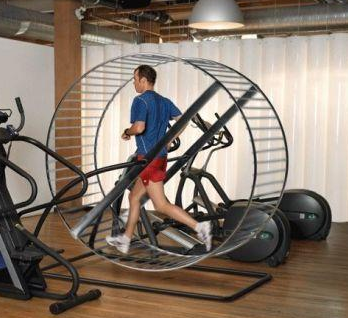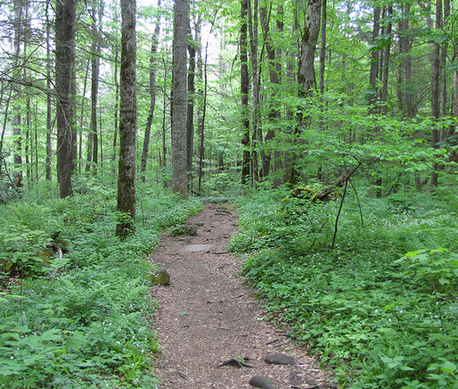“Free range” is one of those terms that’s been in the news recently, and refers to parents’ dropping an over-protective, helicoptering approach to raising their children, and replacing it with much less restrictive control. It’s how childhood used to be. That was how it was with me and my brothers growing up in Shaker Heights, Ohio in the Sixties and early Seventies. All year round, we played outside, unsupervised by adults, whether it was pickup games in football, basketball, baseball, or “war.” There were no soccer leagues, just Little League. We walked the half-mile to and from school, alone, even in foot-high snow during the winter.
We weren’t called free range kids back then. We were just active, restless kids who liked to be outdoors during daylight hours. Nor did we need coaxing to ever leave the house.
At the nearby elementary school in Mill Valley, California, where I now live, I noticed something very special if I happen to pass by during one of its recess periods. Kids are running and yelling everywhere within the chain-link, enclosed blacktop playground. (Sadly and inexplicably, there’s no grass.) It’s a scene of pure chaos and madcap joy.
Adults can learn from the kids. That running can be wide-open and non-structured.
Instead, running, the most natural of human activity, has been taken hostage by exacting training regimens that are mind-boggling and complex. Our miles and speed are tracked and tabulated with any number of wearable-tech devices, then stored digitally for deep analysis. The training log becomes the fog of data.
Racing has become the victim of its own recent success. It’s understandable why there needs to be a smothering concern with participant safety and crowd control, especially in big-city events. At the very first marathons in this country, like the one held at the 1904 St. Louis Olympics, there weren’t any aid stations, to cite one telling example. Today, large marathons are choked by long lines and monitored by badge-wearing officials. from registration to the starting line and then at the finish.
 The gym is the antithesis of free range running (FRR). Go to a health club with a bank of treadmills on any early weeknight, and the sound is deafening, like a jet taking off, as runners pound away on those thin-rubber conveyor belts, registering personal progress on a flashing electronic panel.
The gym is the antithesis of free range running (FRR). Go to a health club with a bank of treadmills on any early weeknight, and the sound is deafening, like a jet taking off, as runners pound away on those thin-rubber conveyor belts, registering personal progress on a flashing electronic panel.
Personally, I find running indoors not fun. Two miles seems like an eternity. So I avoid the dreadmill.
I run outside. I don’t wear a watch. And this dates back to when I first started running over 30 years ago. I will check the time when I head out the door, and then look at the clock, when I get back home. It’s as chronologically constrictive and time-ordering as I would ever hope to be.
For years, I never knew how fast I was running (even when I was training for the Hawaii Ironman). Not that it mattered. But I decided to see one day. I entered the San Francisco Half Marathon. It was a Super Bowl Sunday and about 1,500 runners showed up. I was probably the only runner not wearing a watch.
Once the race began, I was unsure what kind of pace to maintain. But I pushed it far harder than I typically did– I ran about 15-20 miles per week, almost always on the Bay Area trails with my golden retriever Rockee. My breathing was more labored than usual, and my legs were pistoning at a quicker tempo.
I did find a groove that seemed comfortable enough, and it placed me next to a short, compact woman with cropped grey hair, about 45-50. She was a serious runner. How did I know? I asked her and she said she belonged to a Sacramento running club. Each mile she would check her watch.
We were running at a 7:50-7:55 pace. But that number really didn’t mean all that much to me. It could have been 8:50 or 9:50. I ended up finishing the half marathon in 1:43, which placed me in the top third at just under an 8-minutes-per-mile clip.
The following year, I trained for the San Francisco Half Marathon. My goal was to break 100 minutes. I even wore a watch on race day! I got off to a fairly robust start, clicking off a series of 7:30 miles. But when I got to the 6-mile mark, something unexpected happened. I stopped. I wasn’t in any pain or discomfort. Instead, I felt bored, or rather out of sorts as a runner fixated on speed. I dropped out of the race right there, and jogged back to my car.
That was one of the last times I ran in an organized race.
Being untethered to time is the guiding principle behind free range running. Going watchless frees your mind up by not having to look down at your wrist. Without any digital temptation or distraction, your thoughts can easily drift off to interesting, dream-like states of consciousness. This mental, contemplative wandering is best experienced running on trails. You begin to feel one with the wilderness. The emotion or sensation is liberating. Free range running allows for free association.
One last thing here: leave the iPod or iPhone at home; you don’t want to clog your brain with music. Instead, listen to the sounds of nature– wind whistling through tree branches, the water of a small creek flowing over rocks.
Free range running is not for everyone. (It is an art, not a science.) Nor is FRR the same as cross-country running, which was something I actually hated in junior high gym class, and then, the distance was only seven-tenths of a mile. Throat would burn, legs ached.
Running for fitness can be pried loose from competition, and it’s why I run solo. (My dog died long ago, and we had logged over 14,000 miles together for 14 years.) I don’t like it when other runners pass me on the trails. Which happens all the time these days. All I have to do is remind myself why I am out there, running. Or rather, loping. It’s that satisfying middle ground located between jogging and running. Slow is the new fast for those who are middle age or older.
I used to have this desire to run a mile on the local high school track. I was curious to see if I could go under 7 minutes. For one mile. But that urge was regularly suppressed.
In the 1981 book entitled Indian Runner, author Peter Nabokov writes, “It seemed like the Tarahumara found it difficult to extract their running prowess from its cultural context and reshape it to fit the white man’s criteria for competitive sports. Running on a cinder track in endless circles supposedly gave them nightmares afterwards.”
Does running make you free?


Sounds just like Dr. George Sheehan.
Whenever I tell someone for the first time that I am a runner,the first question they ask is “How fast do you go?” My answer is “I don’t know, I’m slow, but I just run because I love it!” Then they ask me if I’m training for a marathon. I’ll tell them I’m not interested in marathons, that I just run because I really, really enjoy it. Then they usually have no more questions for me, I imagine because they were expecting a more “competitive” attitude about running. So much in our modern society is about competing to outdo someone else or try to break records, even if only personal ones. And perhaps they believe that someone couldn’t just enjoy an exercise for the pure enjoyment of it and not need a concrete goal as motivation. I understand this misunderstanding. Shin splints were one of the best things to ever happen to me. If I had not experienced the excruciating pain of shin splints almost 3 years ago when I started running, I never would have had a reason to find a solution for the problem, and I wouldn’t have discovered barefoot running. Once I started running in a way that my body wanted to naturally and unrestricted by “normal running shoes” I discovered a natural love of running that felt like nothing I’d ever felt before, having never been athletic or sporty in my entire life. And now I couldn’t imagine my life without running. Trail running is my real passion. Barefoot or wearing huaraches, flying downhill, strange looks from the people I run past when they notice my choice of footwear or lack thereof. Nothing compares to that for me. Not even winning a marathon. Running puts me at peace with my body and my mind. Yes, running makes me FREE!